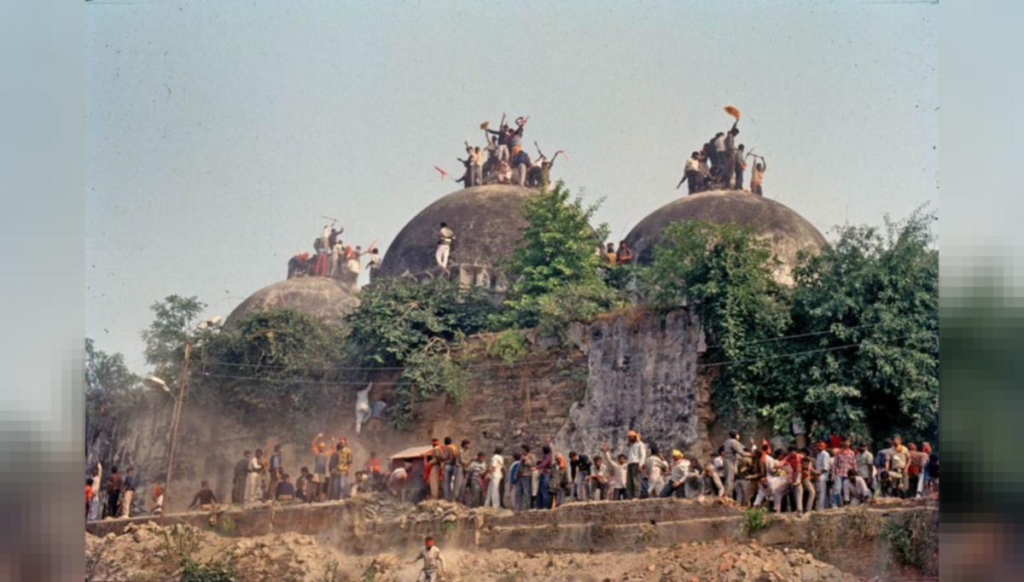The question arises: why is the great historian figuring out a solution in his imagination to a dispute which got a solution to the satisfaction of the Hindus and the other side agreeing to it on finding itself cornered into a blind alley?

New Delhi: When everything seems to have settled down on the Ayodhya dispute, noted historian Harbans Mukhia speculates that it could have been resolved peaceably if the Muslims had agreed to shift the Babri Masjid in the vicinity of the now under-construction Ram temple after having asserted their right over it before the Supreme Court judgment.
His speculation has appeared in an article written by him in The Hindu and published on Thursday. He further says that the judicial verdict has opened a Pandora’s Box, giving opportunities to Hindu organisations to lay claims to all those mosques which have been, according to them, built after demolishing temples across the country.
He also criticised the Supreme Court judgment, saying after pronouncing that no evidence of temple demolition was found, yet, in queer inversion of its logic, it handed over the site to the Hindus, instead of handing over to the Muslims keeping in view that it was a property dispute.
The question arises: why is the great historian figuring out a solution in his imagination to a dispute which got a solution to the satisfaction of the Hindus and the other side agreeing to it on finding itself cornered into a blind alley? The Muslims would have also thought that their large heartedness would see to an end to opening up of new disputes in the future.
But their hope of enjoying peace after burying the decades old dispute was destined to fall apart as the Hindu outfits most favourite slogan have been “Ayodhya to jhanki hai, Mathura Kashi abhi baaki hai” (Ayodhya is a trailer, Mathura and Kashi are yet to be reclaimed).
Post Independence, Ayodhya has never been a religious dispute. Rather, it was weaponised to achieve political ends. When Prime Minister Jawaharlal Nehru asked then Uttar Pradesh Chief Minister Govind Ballabh Pant to ensure the removal of the clay idols of Ram Lalla stealthily put inside the mosque in 1949, the Chief Minister ignored his instruction because he knew that the Congress would lose the support of the majority community in the state as well as across the country if the status quo ante was restored.
After a lull of about fifty years, it once again become a handy political tool in the hands of then Prime Minister Rajeev Gandhi. He utilised it to salvage the erosion of support among the Hindu following the Supreme Court verdict in the Shah Bano case.
He allowed the unlocking of the mosque gate. Thereafter, BJP veteran L K Advani launched his Rath Rath Yatra. Violence trailed the route the Yatra took before it was stopped ahead of the final destination. Though the Yatra was meant by the BJP to mobilise the Hindus for the Ramjanma Bhumi temple in Ayodhya, its political message was never missed out: that it was to counter the 27 percent reservation for Other Backward Classes in Central Government jobs implemented by Prime Minister V P Singh by dusting off the decades old B P Mandal Commission report to go one notch up in the fight for oneupmanship between the Janata Dal and the BJP.
Meanwhile, the dispute continued to linger in courts. Finally, it reached the Supreme Court for the final solution. There is no need for reiteration of the judgment. Since both parties to the disputes have agreed to it, no third entity have the right to reagitate it, but debates on its content and judicial logic would continue, not only in India but also among the judicial fraternity as well people in general across the world.
Coming back to the historian’s hope that it could have been amicably solved if the Muslims had agreed to shift the mosque, which was technologically feasible, in the vicinity of the new temple site and closed the scope for any future dispute is his untainted wild wish keeping in view the political agenda of the BJP and its subsidiaries.
Mukhia further says that it could have created bonhomie between the two communities and the culture of Hindu-Muslim Bhai Bhai would have received a fresh shot in the arm.
The agenda of the BJP and its subsidiaries was not to find a solution to the Ramjanma Bhumi dispute but to have the Hindus believe that the Muslims have wronged the Hindus and now the time has come to make it right by reclaiming all those mosques, which according to them, were built over rubbles of the temples.
The agenda is not to seek a solution and right the wrongs but to keep the pot boiling to make political gains. It is not confined to the aggressor versus victim. Rather, it goes much beyond it and covers all such issues as would make the two communities in a face off stance. The hijab issue, the uniform civil code and the targeting of the madrasas, all have the subtext of humiliation and target the Muslims in the name of bringing them into the mainstream. Their every cultural and religious symbols are on target so that the main agenda of keeping the majority community’s political support intact is not diluted.
So, the magician’s basket would have continued to bring out unsurprising surprises for gawky spectators to draw their clapping, no matter if the solution was amicable or judicial.
